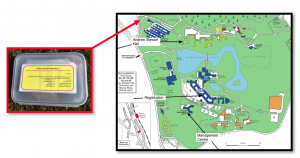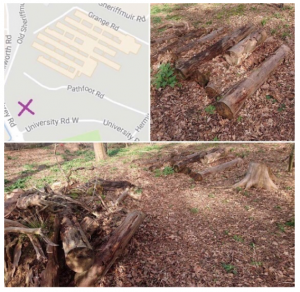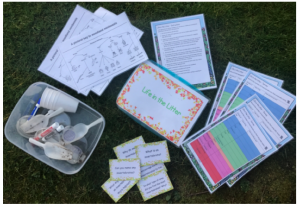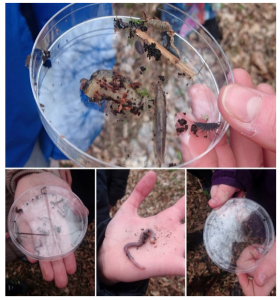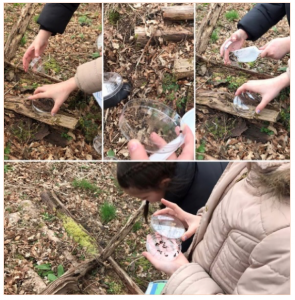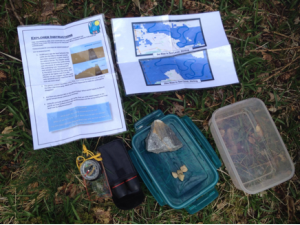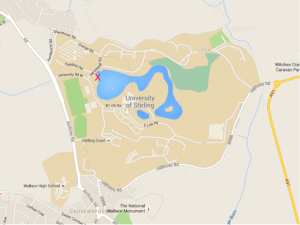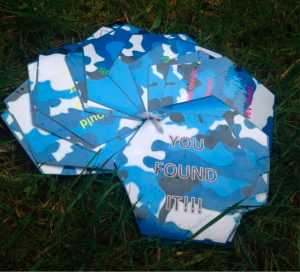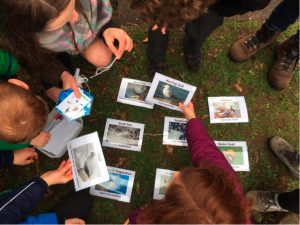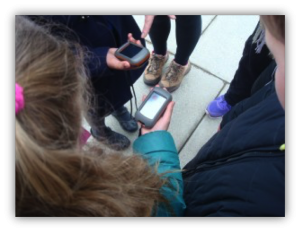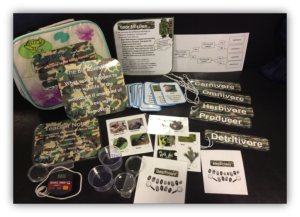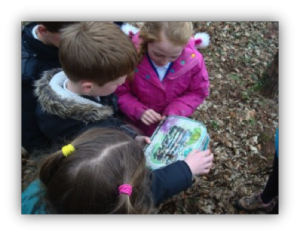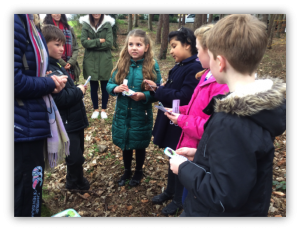The ‘I’m Stumped!’ geocache was hidden within a wooded area in the far North-West corner of the University of Stirling campus, indicated below.
This site was chosen as clear linkages exist between location and planned learning. The scientific concepts being taught were how to use dendrochronology or tree girth to approximate the age of a tree, giving appreciation of how long a tree you are looking at took to grow. Planned extensions to this idea discussed factors influencing tree growth, and trees as a valuable resource. Links were made between trees and climate change. Using an enquiry based approach, the geocache concluded with discussions about how the children and their families could make changes in their lives to help protect the ozone layer and limit climate change.
CACHE CONTENTS
The cache contained questions and activities for the pupils, supported by teacher notes. The box held resources for completion of collaborative tasks and discussions. Differentiated tasks were included in the teacher notes. Photographs were taken to provide prompts for pupils to recall and develop their learning back at school.
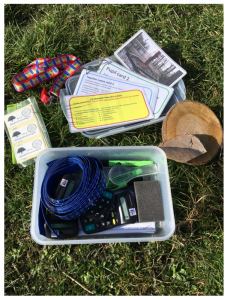
ACTIVITY WALKTHROUGH
Upon finding the cache pupils were encouraged to step back and allow others to discover it for themselves. The cache was opened once everyone had located it.
The pupils followed the instructions, reading out each card in turn:
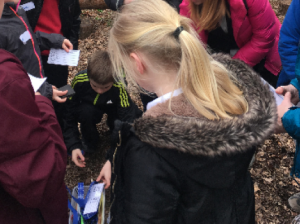
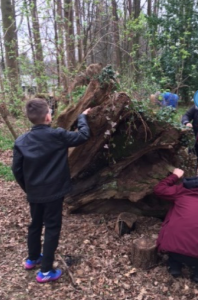
Task 1
Pupils examined tree stumps of their choice and were supported to count the tree rings as a representation of approximate years of growth.

Task 2
Children were asked to consider how to estimate the age of a standing tree. Links were made to the buildup of tree rings and the girth of the tree. A teacher worked with pupils to demonstrate how to measure the circumference of the tree trunk. Pupils then worked in pairs independently, within set boundaries in the woodland, and used their measurements to estimate the age of trees. The group then assembled to discuss their findings.
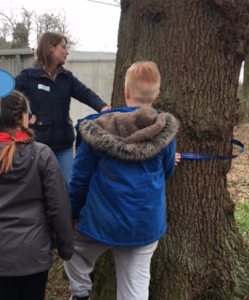
Task 3
Teachers then asked the group why tree rings might differ in width. Through discussing what a tree needed to grow, the children realized how climate can influence tree growth, and they make connections to the hole in the ozone layer and global warming. The group was led into a discussion about sustainability, then encouraged to consider how they might live in a more sustainable way.
CURRICULUM LINKS
Some examples of Experiences and Outcomes met by the activities:
- I can use my knowledge of the sizes of familiar objects or places to assist me when making an estimate of measure MNU 2-11a
- I can discuss the environmental impact of human activity and suggest ways in which we can live in a more environmentally responsible way SOC 2-08a
- I have contributed to discussions of current scientific news items to help develop my awareness of science SCN 1-20a
Authors: Jess Barnes, Carolynn Bell, Danielle McGinigal . (3rd Yr University of Stirling – Primary Education)
* This geocache was a temporary way-marked cache – it will not be available on geocaching.com
Thanks to Ms Westmoreland and all the pupils from Cowie Primary School who came along to help us trial these
